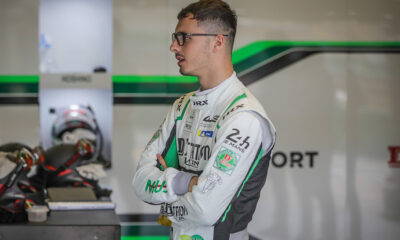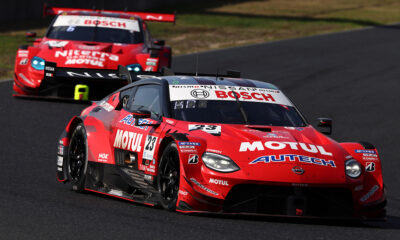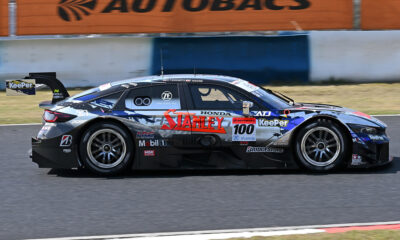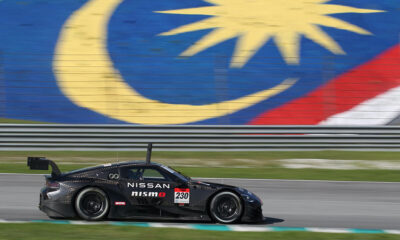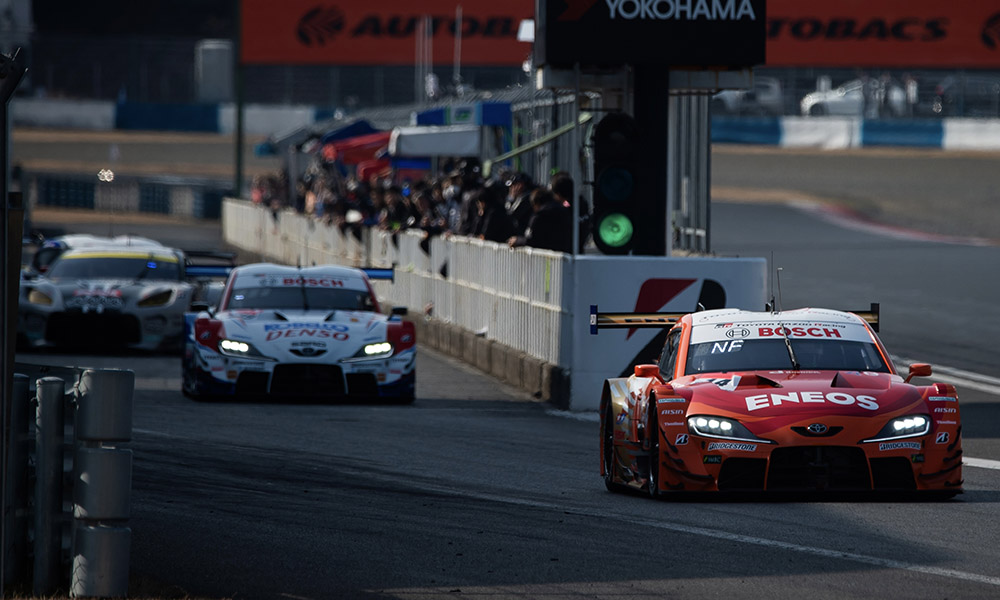
Photo: Konishi Yuya
The first trial of SUPER GT’s radical new aggregate qualifying format during last weekend’s official test at Okayama International Circuit has drawn a mixed initial response from drivers.
Saturday afternoon’s second session at Okayama was essentially a mock qualifying using a heavily revised system that sees teams using a single set of tires for both Q1 and Q2 and the grid set by combined lap times from both sessions.
TOM’S pair Sho Tsuboi and Kenta Yamashita secured GT500 ‘pole’ on the strength of their combined times in the No. 36 Toyota GR Supra, while the top spot in the GT300 class went to the apr Lexus LC500h of Kazuto Kotaka and Jin Nakamura.
A similar trial is planned for this weekend’s second and final official test at Fuji Speedway, again during the afternoon on Saturday.
Yamashita, who was at the wheel for Q1 in the mock qualifying, said he was surprised how close Tsuboi was able to get to his time on used tires, and the fact that some teams were able to set better times on their used tires in Q2.
“I think the new format is really interesting,” Yamashita said. “Maybe it was because it was cold, but the difference between the times in Q1 and Q2 was closer than I imagined.
“You can see the strength of every car and driver [as all cars participate in Q2], so it was also interesting from that point of view.”
Nissan’s Ronnie Quintarelli, who concluded the mock qualifying session fifth alongside new NISMO teammate Katsumasa Chiyo, said he was also pleasantly surprised how quickly he could go in Q2 with used rubber.
However, the Italian warned that there is likely to be a much bigger drop in grip for Q2 at other circuits and in warmer conditions.
“The new format was much better than my expectation, especially in terms of the grip on used tires,” Quintarelli told Sportscar365.
“I think it was down to track conditions, but also because tracks as Okayama has not a very high track surface abrasiveness. When we go to circuits like Suzuka or Autopolis, I think we will see a bigger drop, but I expect a similar gap at Fuji.
Quintarelli’s Nissan stablemate Bertrand Baguette was less positive about the new format, as he believes the need to use the same set of tires for the start of the race means inevitably drivers will be focused on conservation over their grid position.
“It’s a format where you think more about the race than really qualifying,” said the Team Impul driver. “You are already managing tires for the race in qualifying now. Laptime is now secondary, less important.”
Roberto Merhi, who drives for the Team LeMans Ferrari squad in the GT300 class, was likewise left unimpressed by the new format, which he feels isn’t compatible with the practice of splitting the 27-car field into two groups.
“Doing Q2 with old tires is not very nice and spectacular,” said the ex-Formula 1 racer. “Normally in Q2 you want to [aim to] do a track record.
“Plus, combining the lap times is not fair, because Group A always has a disadvantage in Q1. I think they’ve made it too complicated.”
It’s understood not every team in the GT300 class stuck to used tires in Q2 during the qualifying simulation due to a lack of prior testing opportunities.
GTA Convinced of Merits of New Qualifying System
In a media briefing immediately prior to the qualifying simulation, SUPER GT race director Naoki Hattori explained further the thinking behind the new system, which originated from the series’ desire to further reduce the number of tire sets available to teams.
Hattori said the GTA didn’t want to reduce practice time or testing time in the interests of protecting the spectator experience, and that the new qualifying system’s main aim is to lessen the need for teams to sit out chunks of practice in order to conserve tires.
“It’s harder for drivers to set a time on used tires than new,” said Hattori. “Maybe there will be a time loss of around a tenth in each corner, but I think it will be more fun to watch the cars pushing on old tires. You don’t know what’s going to happen.
“Mistakes will be more punished more – you can’t afford to pick up a flatspot. It will also make it more difficult for teams to decide which driver to use in Q1 and Q2.”
It was also clarified during the briefing that, while one tire can be replaced penalty-free if it is damaged, this cannot be done until the end of qualifying – meaning that any flatspot picked up in Q1 will have to be carried over into Q2.
Additionally, it was confirmed that teams will be allowed five sets of dry tires for 350km races and six sets for three-hour timed races. The number of mandatory pitstops for these races has not yet been decided.



















